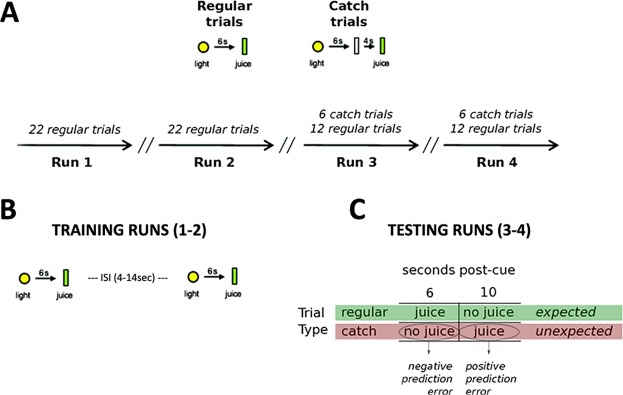Figure 1.
Primary-reward task. The experimental task was a classical conditioning paradigm with fruit juice as a primary reward. (A) Schematic depiction of trial presentation across the 4 runs. (B) Training runs (1–2) aimed to condition subjects to expect juice at a fixed time (6 sec) after a light cue, as well as not to expect juice at all the intervening times during regular trials. In other words, the training runs served to manipulate the temporal aspects of the juice-reward so that we could create events of temporal prediction errors. ISI (interstimulus interval). (C) Table highlighting the combinations of trial type and juice delivery events types in runs 3 and 4, corresponding to negative and positive prediction errors.

